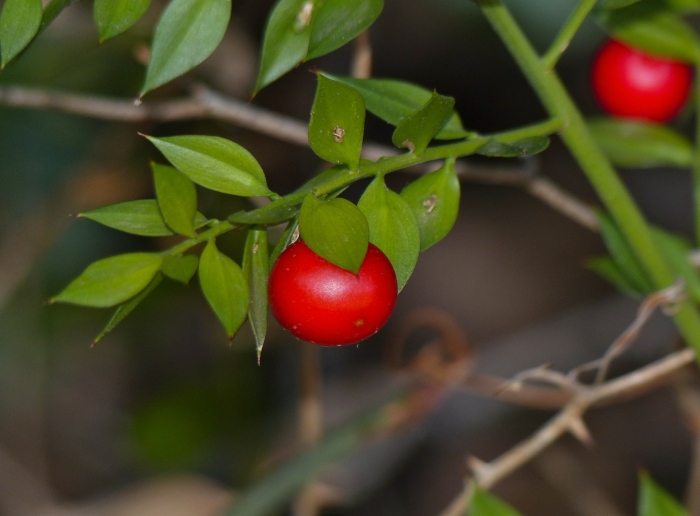Butcher’s Broom
(Ruscus aculeatus)
Butcher’s Broom (Ruscus aculeatus)
/
/

Bernard DUPONT
CC BY-SA 2.0





















































Estimated Native Range
Summary
Butcher’s Broom is valued for its attractive winter and spring color, as well as its ability to thrive in challenging conditions, including dry shade. It is often used in landscaping for ground cover, border planting, and as an underplanting in woodland gardens. It is hardy in USDA zones 7 to 9 and prefers part shade to full shade. The plant is adaptable to a range of soil types, provided they offer good drainage. It requires medium amounts of water, making it relatively low maintenance. Butcher’s Broom can be susceptible to leaf spot and root rot if grown in overly moist conditions. It is also known for its historical medicinal uses, particularly for improving circulation.CC BY-SA 4.0
Plant Description
- Plant Type: Subshrub
- Height: 2-3 feet
- Width: 2-3 feet
- Growth Rate: Slow
- Flower Color: N/A
- Flowering Season: Spring
- Leaf Retention: Evergreen
Growth Requirements
- Sun: Part Shade, Full Shade
- Water: Medium
- Drainage: Slow, Medium, Fast
Common Uses
Bank Stabilization, Drought Tolerant, Edible*Disclaimer: Easyscape's listed plant edibility is for informational use. Always verify the safety and proper identification of any plant before consumption., Groundcover, Hedges, Low Maintenance, Potted Plant, Rock Garden, Salt Tolerant, Street Planting
Natural Habitat
Understory woodlands, scrub areas, and rocky slopes in the Mediterranean region, the Balkans, and the Middle East
Other Names
Common Names: Box-Holly, Butcher’s-Broom, Petit Houx, Fragon Piquant, Stickmyrten
Scientific Names: , Ruscus aculeatus, Ruscus ponticus, Ruscus aculeatus var. angustifolius, Oxymyrsine pungens, Ruscus aculeatus f. pumilus, Ruscus aculeatus subsp. laxus, Ruscus aculeatus var. laxus, Ruscus dumosus, Ruscus flexuosus
GBIF Accepted Name: Ruscus aculeatus L.